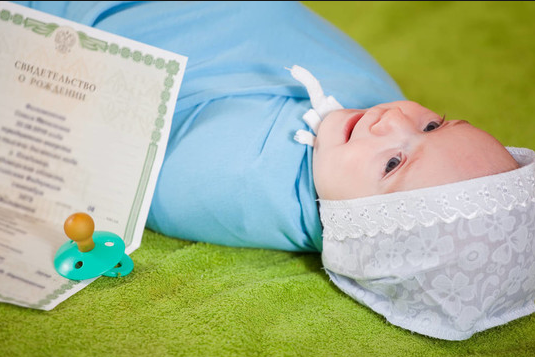
The discovery was made in the quietest way possible. You were applying for a passport for your one-year-old daughter, Sophie, and needed a copy of her birth certificate. You’d seen it a dozen times before, but this time, your eyes lingered on the details you usually skipped. Your blood type: O Positive. Your wife’s: A Positive. And there, in the box for Sophie, was her blood type: B Positive.
You stared at it, the world slowing to a crawl. Your mind, a faithful student of high school biology, scrambled to recall the Punnett squares. Two parents, one with type O and one with type A, cannot have a child with type B. It is a genetic impossibility.
The silence in the room became a roar. The math was simple, brutal, and undeniable. The certificate, an official state document, was stating a biological fact that shattered your reality.
The story your mind immediately wrote was one of betrayal. An affair. A secret. The beautiful, trusting life you’d built over the last five years was, according to this piece of paper, a lie. The child you adored, whose face you saw in your own, could not be yours.
The confrontation with your wife was the most painful moment of your life. You didn’t shout. You just placed the birth certificate on the kitchen table and pointed to the three blood types. “Explain this,” you whispered.
Her face, initially confused, morphed into pure, unadulterated horror as she traced the letters with her finger. “No,” she breathed. “That’s… that’s not possible.”
But the truth, when it finally emerged after days of tense silence and a frantic paternity test, was not one of infidelity.
It was one of a catastrophic, nearly unthinkable, hospital error.
The paternity test confirmed you were, without a doubt, Sophie’s father. The blood type on the certificate was wrong. A deeper investigation, involving lawyers and hospital administrators, uncovered the truth. In the controlled chaos of the maternity ward, a harried clerk had transposed two lines on a spreadsheet. The blood type listed for your daughter, Baby Girl Miller, actually belonged to Baby Boy Johnson, born two hours later and three rooms down. Your daughter’s true blood type, lost in the bureaucratic shuffle, was O Positive, just like yours.
The baby’s birth certificate has a blood type that reveals the hospital might have made a catastrophic clerical error, not that your partner made a catastrophic betrayal. The document you held wasn’t evidence of a broken vow, but of a broken system. The impossible genetic code wasn’t a sign of another man; it was the ghost of another baby, a stranger whose first official record was accidentally intertwined with your daughter’s.
The relief was a tidal wave, so powerful it left you both weeping and clinging to each other. The trust that had been fractured was now reforged in a fire of shared trauma, stronger and more precious for having been so severely tested. You looked at your daughter, at her unmistakable nose and your wife’s eyes, and you understood that the most terrifying truths are sometimes just profound and simple mistakes. And the paper that almost broke you became a testament not to a secret, but to the unshakable fact that she was, and always had been, yours.